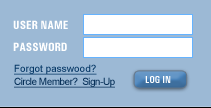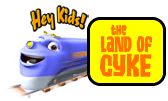 |
 |
 |
Addictions
Addictions are not things that you normally want think about with your children. But with the increasing stress in the world today, substance abuse is higher in our children today than a few decades ago. Lately, through education and prevention efforts, the rates of substance abuse among teenages are indeed decreasing.
Learn about the types of things that children abuse and important warning signs.
Substances that children and teens abuse:
Alcohol
People who start drinking at an early age--for example, at age 14 or younger--greatly increase the chance that they will develop alcohol problems at some point in their lives.
Ecstasy
According to the 2005 Monitoring the Future survey, 3.0% of 12th graders, 2.6% of 10th graders, and 1.7% of 8th graders had used Ecstasy in the past year.
Street names: XTC, X, Adam, hug, beans, love drug.
Inhalants
Inhalants are often among the first drugs that young kids use. In NIDA's 2005 Monitoring the Future study, 17.1% of 8th graders, 13.1% of 10th graders, and 11.4% of 12th graders said they had abused inhalants at least once.
Street names: Whippets, poppers, snappers.
Marijuana
The most commonly used illegal drug in the U.S. Nearly 45% of U.S. teenagers try marijuana before finishing high school.
Street names: Pot, ganga, weed, grass, and many others.
Methamphetamine
According to the 2004 National Survey on Drug Use and Health, nearly 12 million Americans have tried methamphetamine.
Street names: Speed, meth, chalk, ice, crystal, glass.
Nicotine
One of the most heavily used addictive drugs in the U.S. In 2004, 30% of the U.S. population over age 12 used tobacco at least once in the month prior to being interviewed. Nicotine is highly addictive. The tar in cigarettes increases a smoker's risk of lung cancer, emphysema, and bronchial disorders. The carbon monoxide in smoke increases the chance of cardiovascular diseases. Secondhand smoke causes lung cancer in adults and greatly increases the risk of respiratory illnesses in children.
Some things to consider :
The earlier you catch these problems the better.
If there is a family history of substance abuse in the family then be especially watchful of your children.
If your child has a mood problem, then get them help before they start to self-medicate.
(Sources: NIDA, NIAAA)


